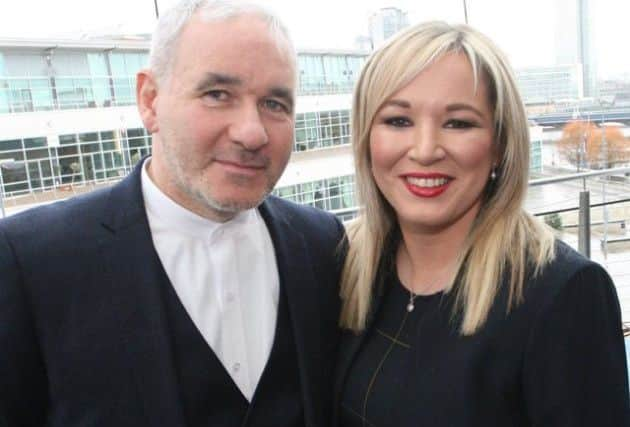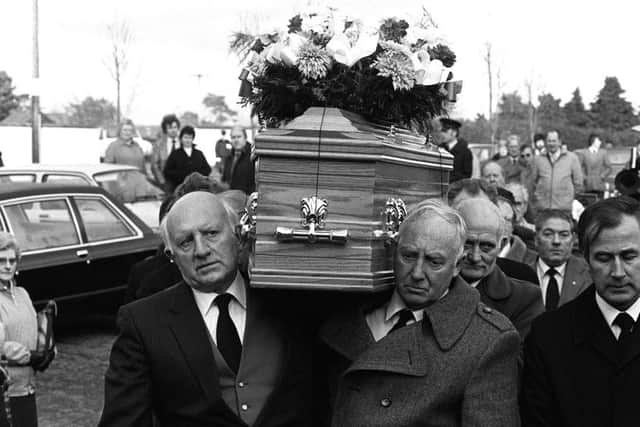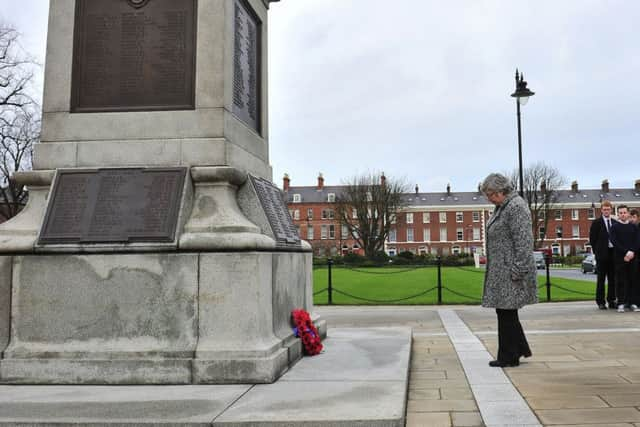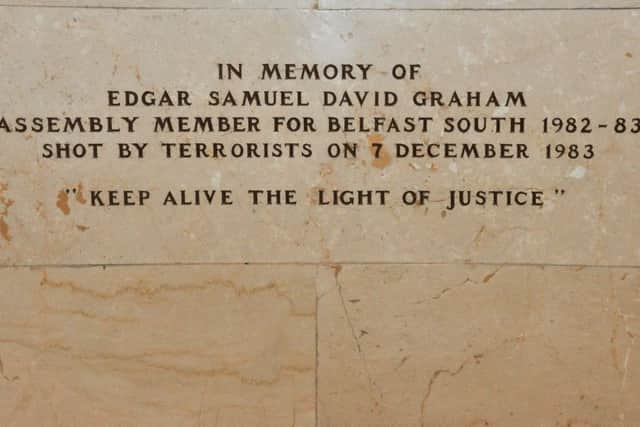The IRA murdered Edgar Graham because he could have changed Northern Ireland


On the morning of November 27, 1999, David Trimble was addressing a meeting of the Ulster Unionist Council, hoping to persuade them to support a motion allowing the party to enter an Executive with Sinn Fein – even though the IRA had yet to decommission.
He spoke of the huge political, psychological and emotional difficulties involved: “I am fortunate I suppose in this, that I have not had any close member of my family murdered.
Advertisement
Hide AdAdvertisement
Hide Ad“But I have had friends murdered, Edgar Graham and Robert Bradford.


“I know that if Edgar had not been murdered he would probably be standing here speaking to you today, not me, and I am fairly certain he would be saying what I am saying.”
At the end of that meeting a young member of the UUP (he was still at Queen’s, so would probably have been 19 or 20) came across to me and asked, “Who was that guy Edgar Graham that Trimble was talking about?”
Advertisement
Hide AdAdvertisement
Hide AdEdgar Graham was just 29 when he was shot dead by the IRA on December 7, 1983.


He was walking down University Square – from the University Road end – and saw his friend Dermot Nesbitt coming the other way, on the other side of the road.
He crossed over to talk to him and put his bag on the wall while they chatted.
A few minutes later two men ran up behind him and fired a number of times, at point-blank range, into his head.
He was dead within seconds.


Advertisement
Hide AdAdvertisement
Hide AdShortly afterwards, when the news was announced in the Students’ Union, Sylvia Hermon heard a vast roar of approval from some republican students.
Later that day Gerry Adams refused to condemn the killing, because Sinn Fein was not prepared “to join the hypocritical chorus of establishment figures who were vocal only in their condemnation of IRA actions and silent on British actions”.
I first met Edgar around 1977, while I was still at Queen’s and involved in student politics.
He was a devolutionist while I was an integrationist.


Neither of us belonged to any of the Loyal Orders and we both had ‘difficulties’ with capital punishment.
Advertisement
Hide AdAdvertisement
Hide AdNow, and this may seem an odd thing to say, he didn’t look to me, nor sound to me, like a traditional unionist politician.
It wasn’t just that he was an intellectual – although he always wore his academic achievements lightly – it was that he didn’t always look like a comfortable fit inside the UUP.
In fairness, neither did David Trimble nor Enoch Powell, nor even Dermot Nesbitt.
Yet it was very clear that he was politically ambitious.
He was elected chairman of the Young Unionist Council in 1981 and was responsible for reorganising and regenerating it, turning it into a much more effective vehicle within the party.


Advertisement
Hide AdAdvertisement
Hide AdHe was also elected honorary secretary of the Ulster Unionist Council, giving him a very high profile within and across the party.
In October 1982 he was elected to the ‘new’ NI Assembly for South Belfast where, according to observers, “he displayed an impressive command of parliamentary procedure, which few could match”.
Indeed, even at that early stage, a number of senior figures in the party had marked him out as a future leader of the party.
An indication, I think, of his sense of frustration within the party – and he clearly didn’t support the integrationist tendencies of party leader Jim Molyneaux and Enoch Powell – was his decision to seek the party nomination for the newly created parliamentary constituency of Strangford.
Advertisement
Hide AdAdvertisement
Hide AdHe lost out to John Taylor (who went on to win the seat in June 1983) but he had sent a message to the party that he was serious about a long-term political/electoral career. He wanted to be a new generation voice for change.
But he had also come to the attention of people in both republican and loyalist circles.
He was firmly in favour of so-called ‘supergrass’ trials, which at that period were causing havoc inside all terrorist organisations.
During an emotionally charged debate in the Students’ Union he had deployed all of his very considerable legal and intellectual skills to defend the trials.
Advertisement
Hide AdAdvertisement
Hide AdSylvia Hermon, who had come to listen to him, commented later that, “I felt afraid for him that day and in that environment. But I did not realise then the significance of it”.
Loyalist paramilitaries also disliked him because he opposed the separation of prisoners in the Maze: “Does Assemblyman Graham really speak on behalf of the UUP and its elected representatives?” asked the UVF.
“They will be judged by their silence.”
Ironically he carried a personal protection weapon because he had reason to believe that terrorists on both sides wanted to kill him.
The IRA murdered him, saying that his killing “should be a salutary lesson to those loyalists who stand foursquare behind the laws and forces of oppression of the nationalist people”.
Advertisement
Hide AdAdvertisement
Hide AdThey murdered him because he was the sort of unionist they most feared: a unionist who wanted good, accountable, power-sharing government here; a unionist who was not afraid to criticise loyalist paramilitaries; a unionist who believed that the law was worth upholding; a unionist who could bring new thinking and leadership to the UUP.
And, even after all this time, they still don’t like unionists like Edgar Graham.
Who knows if Edgar would have become leader?
All we need to know, and remember, is that he was killed because he was an enemy of all paramilitarism.
• Read Alex Kane in the News Letter every Monday
Advertisement
Hide AdAdvertisement
Hide Ad